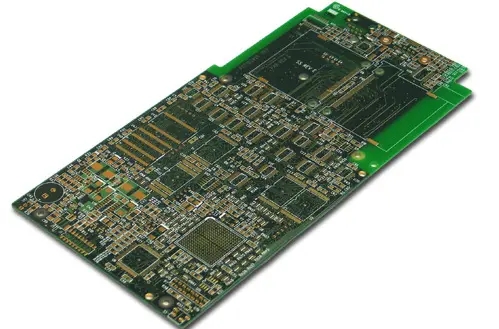
Understanding of process residues and the importance of PCB surface cleaning
PCB manufacturers, PCB designers and PCBA processors explain their understanding of process residues and the importance of PCB surface cleaning
Every PCB operator knows that various chEMIcals must be used in the processing process, but not everyone understands the impact of chemICal residues on electronic assembly production. The importance attached by the manufacturers of printed circuit boards to the important role of board surface cleanliness is crucial for subsequent electronic product assemblers to produce safe, reliable, stable and practical products. In the electronic industry, ion chromatography is an important tool. This method can be used for qualitative and quantitative analysis of process residues, and its source can be pointed out. So, what chemicals are beneficial to PCB production, but opposite to assembly?
1、 Chloride ion
Generally, people only know that chlorine can kill bacteria, which is usually used in tap water and swimming pools. Chlorine bleach can also make our clothes white and bright, but daily life is different from electronic products. PCB manufacturers should pay attention to the following matters:
For pcb assemblers, the existence of chloride ions will cause electric leakage, erosion and ionization of metal substances. Chlorine is a non-metallic substance with strong activity. If there are enough chloride ions on the module board, the ion electrode potential formed by the combination of chlorine and moisture in the moisture will cause corrosion and metal ionization.
2. In the production process of printed circuit, there are many potential sources of chloride ions on the board. In general, it is difficult to find out all the sources of chloride ions. The places where this happens frequently include the flux in the hot air leveling (HASL), the sweat on the operator's skin, and the tap water for cleaning, etc.
3. The content of chloride ion is affected by the chemical composition of flux. Due to the natural characteristics of rosin resin, if high-quality solid rosin is used as the flux (such as active flux or light active flux) in the assembly process, the content of chloride ions is relatively high. Resin based or rosin based water-soluble fluxes and non cleaning fluxes are the opposite in this respect. Therefore, the chloride ion content of water-soluble or non cleaning flux used for assembly welding process is low.

4. The content of chloride ion is affected by the material of PCB. The material of PCB board (including its insulating substrate and attached metal) determines the allowable chloride ion content during assembly. Ceramic mixture substrate or other materials formed on refractory materials, such as aluminum, are more sensitive to the presence of chloride ions than organic substrates, such as epoxy glass cloth substrate. This is partly due to the fact that the surface integrated distribution has reached the micro scope. As far as the surface metal layer is concerned, the nickel/gold surface itself is much cleaner than the lead/tin surface.
2、 Bromine
Relatively speaking, bromine has less influence on the working stability of the circuit than chlorine. Bromine is used as a flame retardant additive in epoxy glass cloth. Where there is bromine in PCB processing, it also includes solder resist ink, character ink and some fluxes with bromine as active material. The corrosion caused by bromine is mainly from the residue of flux (e.g. HASL flux). The bromine content is related to the degree of looseness of the plate or the porosity of the solder mask, so the situation of the plate or solder mask reflects the bromine content. In addition, the tiMES of high temperature cleaning of boards also play a role in bromine content, and the impact of bromide is related to the process of printed circuit boards, especially the cleaning of hot air leveling welding aids before assembly welding.
3、 Sulfate ion
As chlorine and bromine ions play the same role, the presence of excessive sulfate will also cause damage to electronic assembly materials. Sulfate comes from many processes in PCB processing, including various kraft paper, plastic materials and acids used for micro etching. Most often, sulfate ions come from tap water used for rinsing or cleaning.
4、 Methanesulfonic acid
Methyl sulfonic acid (MSA) is a caustic chemical, which is usually used in many electroplating processes. We have now found that MSA is also used as a substitute for active agent in some hot air leveling fluxes. If MSA is not fully neutralized or cleaned, its corrosion will be many times that of chlorine. The chemical equilibrium formula of MSA is as follows:
CH3SO3H(aq) ------ CH3+(aq.)+HSO3- ------- (aq.)
Here: CH3+=formaldehyde
HSO3 -=hydrogen sulfide or sulfonate (negative ion)
5、 General principles of cleanliness
How is adequate cleaning? At present, the definite answer seems to be: "Not sure". Traditionally, most military and commercial standards on board cleanliness only indicate the "qualified" and "unqualified" limits. However, such limited parameters generally do not take into account the complexity of the assembly components, the use environment or reliability of the end user, etc. Most industry standards attach great importance to the fact that the standards for panel cleaning must be based on a series of problems that have already or may occur that adversely affect the assembLED products. Therefore, at present, people cannot provide a unified, complete and precise standard for the cleanliness of printed circuit board layout.
Based on ten years of experience in solving practical problems and analyzing accident data, the American Pollutant Research Laboratory (CSL) has provided some relevant specifications for panel cleanliness. PCB manufacturers, PCB designers and PCBA processors will explain their understanding of process residues and the importance of PCB surface cleaning.
然后
联系
电话热线
13410863085Q Q

微信

- 邮箱











